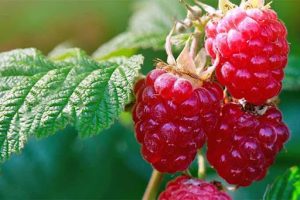Berry plants are excellent options for container gardening, particularly if you pick carefully which types to cultivate. Growing berries in containers allows gardeners with limited space or apartment dwellers who grow on a balcony, porch, or patio a degree of flexibility not available when growing similar plants in the ground. Container – based berry plants can be readily moved from one side of the deck to the other to maximise sunshine exposure all through the day, so you can produce lots of fruits even in a semi-shady location. Oh, and when your lease expires, the containers can easily be transported to a new apartment!
Growing berries in pots also makes gathering them much easier; simply place the container outside the rear entrance and you won’t even have to take off your slippers to get a handful of berries for your breakfast. You’ll also have greater control over watering and fertilising. As if all of these fantastic reasons for growing berries in pots weren’t enough, potted berry plants also make lovely ornamental additions for your outdoor living space.
Now that you understand why you should grow berries in pots, it’s time to discuss the finest plants to use.
1. Blueberries ?
Blueberries that develop a mature height from one to three feet are the finest for containers. Look for Bushel and Berry kinds like Pink Icing, Blueberry Glaze, Jelly Bean, and Peach Sorbet that have been bred particularly for growing in pots at your local garden centre. The fact that these container-friendly cultivars are all self-pollinating is an added bonus. Because “regular” blueberries are not self-fertile, pollen from one type must be used to fertilise another. To put it another way, you’d need two or more bushes of various types to get berries on those plants. Self-pollinating blueberries, on the other hand, only require one plant to produce fruit. They make it simple to cultivate berries in pots.
2. Mulberries –
The mulberry tree is a deciduous tree or big shrub that grows to be small to medium in size. Some varieties easily surpass 30 feet in height, although the tree can be cut and the height can be controlled. You can, however, learn how to grow berries in a container. Mulberries can be grown in containers because their fruits are scarce in the market due to their short shelf life. The cultivar also affects the size of the tree and the quality of the fruit. Mulberry plants thrive in subtropical and mild temperate climates. Mulberry trees come in a variety of sizes and shapes, but the two container-friendly types are ‘Dwarf Everbearing’ Mulberry and Mulberry ‘Issai.’ These two aren’t taller than 2 metres. Morus alba ‘Pendula’ and Pakistan Mulberry are two more prominent types. You can, however, use any cultivar and prune the height to keep it under control.
3. Raspberries ?
If you want to plant raspberries in a pot, start by filling it with good soil and draining it well. Make sure the plants get enough sun. Shorter variations might be grown in any five-gallon container (12 inches wide). This keeps the soil’s nutritive resources from being strained. Also, remember to water the plants on a regular basis to keep the soil wet, and feed with an elevated fertiliser throughout growth for sweeter berries.
4. Blackberries –
Cultivating blackberries in a container can be both enjoyable and fruitful. A pot (5 gallons or larger), a blackberry plant, dirt, stakes for support, and a few pieces of the shattered pot are all you’ll need to boost drainage. Begin by filling the container with nutrient-rich soil and placing the broken pieces at the bottom. Water your blackberries after planting it in the container. After the plant begins to develop, the support stakes become necessary. This is due to the fact that these berries are noted for producing long, frail canes that require support, particularly during blooming and fruit development.
5. Blueberries –
Blueberries should be on your list of berries to grow in pots if you’re seeking for the best berries to grow in containers. These berries are reputed to persist longer than other garden berries, despite the fact that they can take up considerable space. You still might grow them in small areas if you have the correct and necessary information. The main advantage of growing blueberries in pots is that it allows you to regulate the pH of the soil at a lower level (acidic, between 4 to 5.5). Good drainage and enough sunshine are important for the plant’s appropriate and “fruitful” growth, as they are for most berries.
6. Strawberries –
Strawberries are among the most productive plants for a small-space fruit garden, and they’ve been grown in pots for decades. You don’t need to buy a certain variety of strawberry to have success, whether you grow them in hanging baskets, pocketed strawberry jars, or recycled containers. The majority of types will thrive in containers. Choose a June-bearing kind if you want berries that all mature at the same time in early summer. Plant an ever-bearing (or day-neutral) strawberry type instead if you want a handful of berries every day throughout summer. In your pots, you can also plant miniature alpine strawberries. These fragrant small berries bear fruit throughout the summer and have a delectable, delicately floral flavour.
7. Black Currants ?
Blackcurrants are also one of the most container-friendly berries. Their sweet sweetness and high Vitamin C content make them extremely beneficial. You’ll need a big container for this. It thrives on a wide range of soils, just like mulberries, but prefers adequate drainage, moisture retention, and a high organic matter content. Keep in mind that the container should be placed in a location that receives lots of sunshine. It’s also worth noting that frost substantially affects the yields of the plant. As a result, if you’re not in a frost-free area, make sure you take some precautions.
8. Gooseberries ?
Gooseberries grow similarly to currants in pots; you’ll need a medium-sized pot that’s at least 15 inches deep but a bit broader because gooseberry bushes are shallow-rooted and prefer to sprawl rather than grow erect. They never reach a height of more than 5 feet. While you can grow either American or European gooseberries, the former is better for containers because it grows more compactly, produces more fruit, and tolerates more light. Its fruits, on the other hand, are smaller and have a milder flavour than European gooseberries.
Conclusion
Growing berries in pots is, as you can see, both enjoyable and rewarding. With a little planning ahead of time, you’ll be gathering big, delicious berries in no time!




